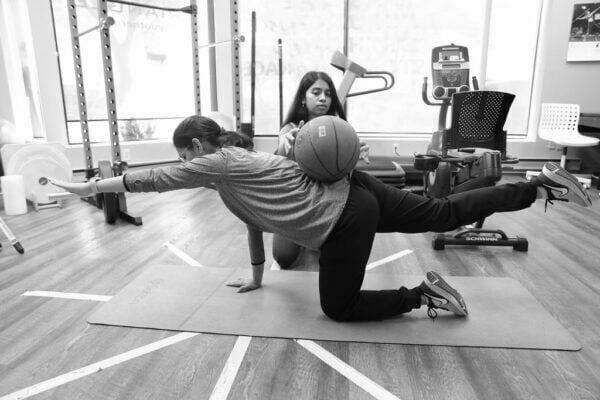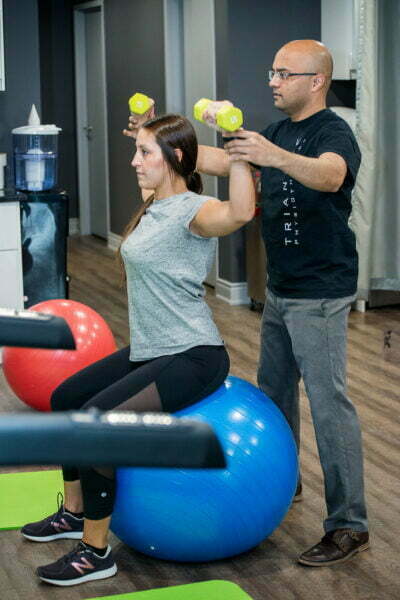Importance of Physiotherapy Exercises
Physiotherapy exercises have a major role to play in the recovery plan for any injury or accident. It is directed towards specific objectives like restoring muscular and skeletal function, increase circulation, reduce muscle spasms and improve overall strength and well-being. Gone are the days when a patient was told to just rest for two or three weeks, sometimes even long after an injury. Advanced physiotherapy exercises are now a part of the treatment plan and have in fact become an important modality in managing musculoskeletal conditions. These days, Physiotherapy exercises constitute a huge part of the recovery plan post any injury or trauma. You can consult our specialized Physiotherapy services in GTA.
Reasons to include exercises in your recovery
There are various reasons why you should include Physiotherapy exercises in your recovery plan. Here are the reasons you should have to keep moving for better recovery and overall strength –
- Reduces or eliminates pain – Physiotherapy exercises like joint or soft tissue mobilization helps in reducing pain and restoring joint and muscle function. It also helps in preventing the pain from returning.
- Avoids surgery – There are instances when physiotherapy exercises can eliminate the pain and heal the injury, thereby avoiding the surgery and its associated risks.
- Improves mobility – Irrespective of age or gender, mobility issues like standing, walking, or moving can hit anyone. Strengthening and stretching exercises in Physiotherapy helps in restoring the ability to move.
- Recovery from a sports injury – A good physiotherapist understands how different sports can increase the chances of sports injury and therefore, they can lay out an appropriate recovery plan based on your injury and medical condition.
- Improves balance and prevents fall – Physiotherapy assesses your vulnerability to falls and associated risks. Your physiotherapist will provide appropriate physiotherapy exercises to improve balance and coordination for safe walking.
- Manages diabetes and vascular conditions – Physiotherapy exercises can be a part of the overall diabetes management program. People suffering from diabetes face troubling sensation in feet and legs. They can be benefitted from physiotherapy exercises in ensuring proper foot care.
- Manages age-related issues – As a person ages, he/she may develop complications like arthritis, osteoporosis or joint replacement. Physiotherapy exercises can help patients recover from such age-related disorders.
- Recovery from a stroke – Many people experience losing some degree of function and movement after stroke. Physiotherapy exercises help in strengthening the weakened body parts and improve strength and balance. Your physiotherapist will also work in improving your ability to move around so that you can be more independent at home and take care of yourself without being dependent on anyone.
- Manages heart and lung diseases – After a heart attack, though the patient may complete cardiac rehabilitation, he/she may need physiotherapy if the daily functioning is affected. Physiotherapy exercises also help in improving lung capacity through breathing exercises, conditioning, strengthening, and clearing the fluids in the lungs.
- Improves women’s health and other conditions – Women face specific health conditions like pregnancy and post-partum care. Physiotherapy exercises for women help in managing specialized issues related to women’s health. Physiotherapy also provides specific treatment for medical conditions like breast cancer, bowel incontinence, constipation, lymphedema, fibromyalgia, etc.

Physiotherapy Oakville offers a host of services to help you recover from injury or medical conditions. You can visit our clinics in the GTA for your specific requirements or consult our physiotherapists online through a secure video conference platform from the comfort of your home or office.
Based on your condition, our physiotherapist will develop a detailed and personalized program targeted to your needs. This program will include various physiotherapy exercises aimed at addressing the difficulties you experience. Joining Physiotherapy Oakville ensures you receive tailored care that fits seamlessly into your lifestyle, promoting effective recovery and overall well-being. Connect with us today to start your personalized physiotherapy journey.
Physiotherapy exercises have two main objectives
- Lubricate joint surfaces
- Maintain and increase range of motion

There are various types of physiotherapy exercises that help in achieving both of these objectives.
Musculoskeletal physiotherapy
- Also known as orthopedic physiotherapy, this treatment falls under the category that aims to restore the functioning of the musculoskeletal system, including muscles, joints, ligaments, tendons, and bones. Musculoskeletal physiotherapy focuses on –
- Reducing pain
- Correcting skeletal alignment
- Treating damage in soft tissues
- Improving mobilization
Geriatric physiotherapy
Focusing on older adults, this branch of physiotherapy exercise caters to specific needs that occur during old age. As people grow older, they experience disorders like arthritis, cancer, joint replacement, Alzheimer’s, osteoporosis, and balance disorders. The main goals of geriatric physiotherapy are –
- Reducing pain
- Restoring mobility impacted by old age
- Improving overall wellbeing and physical fitness
- Helping inactive aging
Sports physiotherapy
- This niche branch of physiotherapy exercise includes management of athletic and sports injuries through –
- Initial diagnosis and assessment of sports injury
- Treatment of the injury through personalized advice and techniques to promote healing
- Ensuring a quick return to the sport through rehabilitation and progressive injury management
- Advice on preventive practices like movement assessment to identify and address the known precursors to the injury
- Sharing specialized knowledge to sportsperson or athletes like taping technique to aid in the prevention of injury in future
Women’s Health
- Physiotherapy for women is a very specific area and requires particular physiotherapy exercises to address health issues faced by women. These include childbirth, prenatal, postnatal care, fertility issues, etc. Physiotherapy exercises for women focus on –
- Strengthening the core
- Reducing lower back, hip, and pelvic pain experienced during and after pregnancy
- Controlling urinary incontinence
- Activating pelvic floor
- Decreasing lymphatic swelling
- Prenatal and postnatal care
Rehabilitation and pain management
This can be divided into two categories –
- If you are experiencing chronic pain and are planning to go for surgery then this physiotherapy exercise would help you in relieving pain.
- Treatment before the surgery helps in strengthening the body and preparing it for post-operative rehabilitation.
Neurological physiotherapy
This range of physiotherapy exercises focuses on disorders affecting the nervous system like head injuries, stroke, damage in the spinal cord, sciatica, multiple sclerosis, Parkinson’s disease, and issues related to vertigo. Here the treatment focuses on –
- Correcting neural pathways
- Motor control
- Balance and coordination
Your physiotherapist will suggest the exercises depending upon the stage of your recovery. Range of Movement (ROM) exercises are commonly suggested forms of exercise in physiotherapy. These exercises are advised for a specific joint where there is a reduced amount of movement. There are three types of Range of Movement exercises.
- Passive Range of Motion Exercise (PROME) – Here, the physiotherapist moves the limb along the joint range. It is mostly performed on patients who cannot move their limbs.
- Active – Assistive Range of Motion Exercises (AAROME) – This Range of Motion Exercise is performed on patients who can move their limbs but need assistance to complete the joint range. Here the role of the physiotherapist is very important as he helps the patient to complete the movement and ensure that the pain is not worsened.
- Active Range of Motion Exercise (AROME) – Here, the patient performs the physiotherapy exercises without any physical assistance from the physiotherapist. Though the physiotherapist suggests and instructs the proper execution of the exercise, the patient performs all the exercise by himself.
If you feel or experience any pain in the body, please contact us and speak to our skilled and experienced physiotherapists for an expert opinion.




